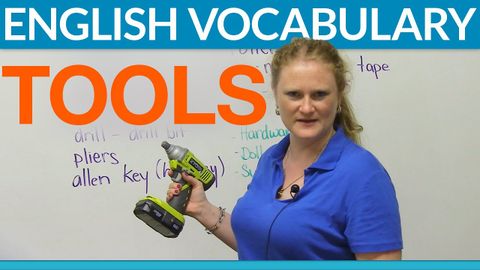
Subtitles & vocabulary
Vocabulary - Tools & hardware: screw, hammer, wrench, level...
00
Ashley Chen posted on 2014/08/29Save
Video vocabulary
bit
US /bɪt/
・
UK /bɪt/
- Noun
- Device put in a horse's mouth to control it
- Small piece of something
- Intransitive Verb
- (E.g. of fish) to take bait and be caught
A1
More measure
US /ˈmɛʒɚ/
・
UK /ˈmeʒə(r)/
- Noun (Countable/Uncountable)
- Plan to achieve a desired result
- Tool used to calculate the size of something
- Transitive Verb
- To determine the value or importance of something
- To calculate size, weight or temperature of
A1TOEIC
More roll
US /rol/
・
UK /rəʊl/
- Countable Noun
- Small, round piece of bread for one person to eat
- Photographic film wrapped round and round itself
- Verb (Transitive/Intransitive)
- To continue along as time normally progresses
- To produce a very deep and continuous sound
A2TOEIC
More screw
US /skru/
・
UK /skru:/
- Transitive Verb
- To cheat someone, as out of money/property
- To close something by turning it into place
- Countable Noun
- Long metal nail with a spiral thread
B1
More Use Energy
Unlock All Vocabulary
Unlock pronunciation, explanations, and filters
